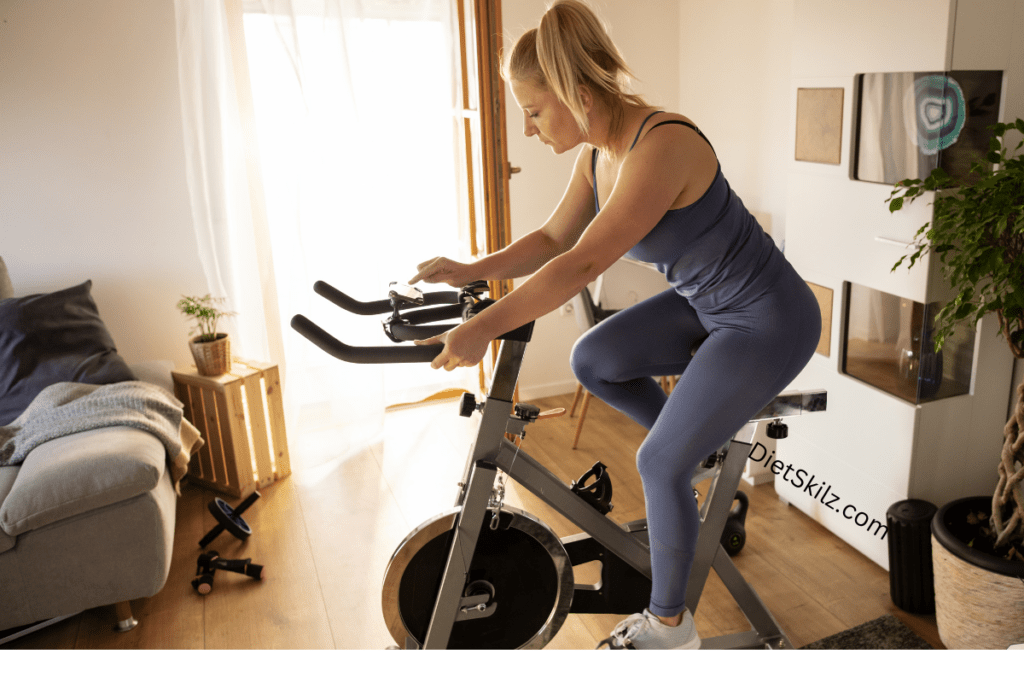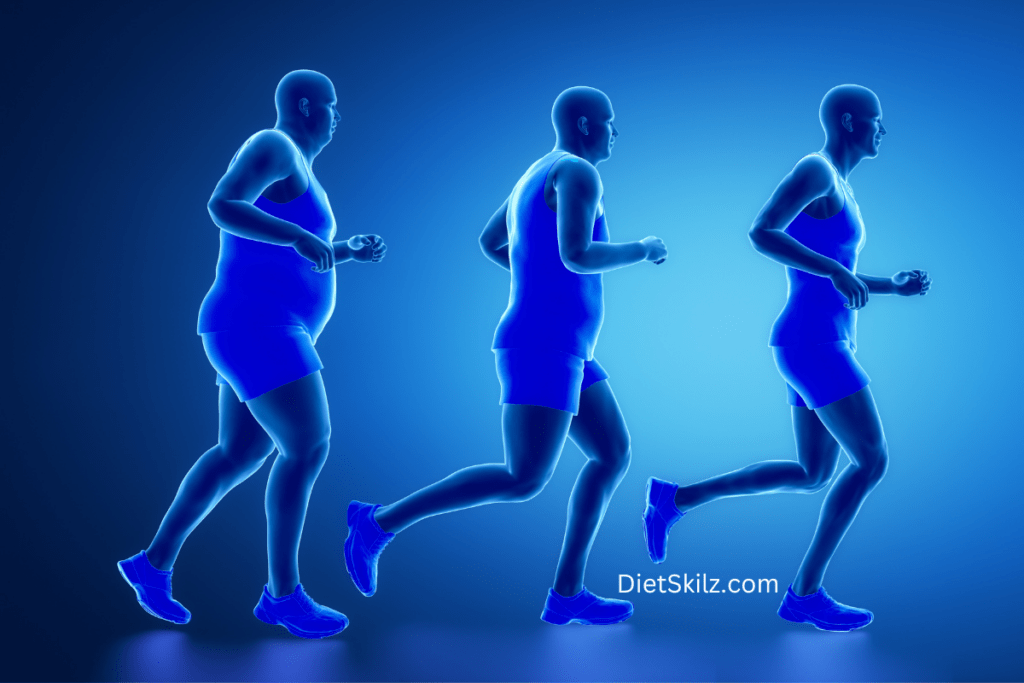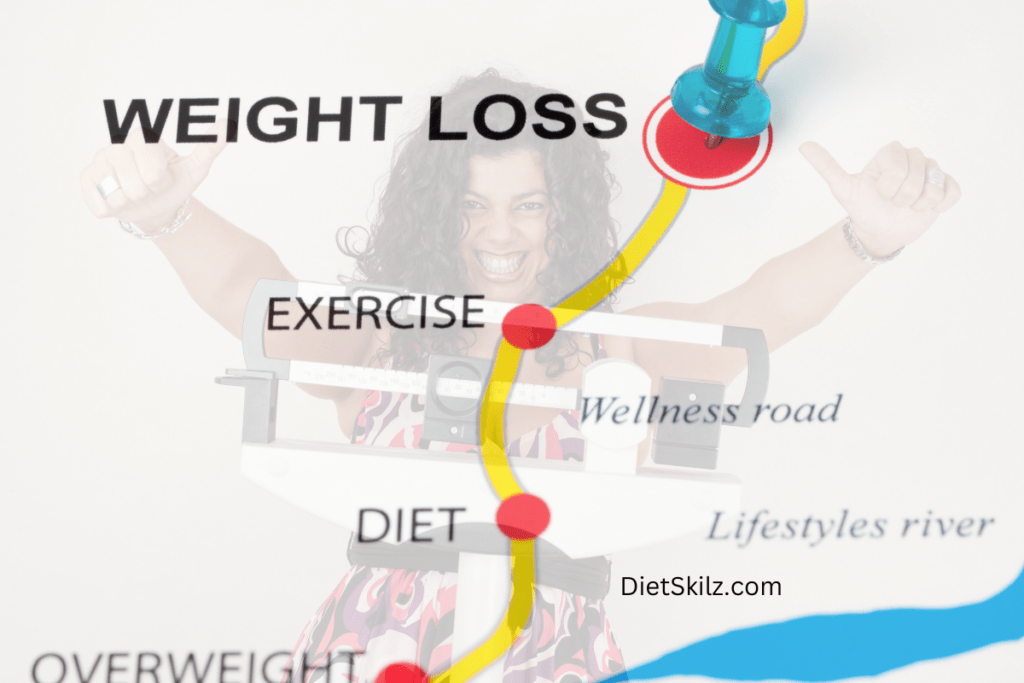Including cardio to lose weight these days is a given! In fact, cardio exercise is a part of any legitimate weight loss program. However, there’s still a lot of debate going on about how to get the best results. Read this post to see exactly how to lose weight with cardio exercises.
How to Lose Weight With Cardio
I believe you will see for yourself in this post that mastering the basics is what really matters — rather than technical details.
1. Don’t Allow Your Body To Adapt To Routines

It is truly amazing how quickly our bodies adapt to regular exercise programs. For instance:
When you ask how to lose weight with cardio, it’s essential that you rememember that your body always tries to adapt to your routine. When it acclimates itself to what you are doing it will slow down the calorie burn.
That means to keep burning calories and losing weight with cardio, you will need to mix up different cardio-vascular workouts, and their intensity levels.
A heart pumping exercise is any exercise that raises your heart rate and keeps it elevated for extended periods of time like:
- Spinning
- Intense bicycling
- Rowing
- Stair climbing, or stair climbers
- Jumping rope
- Running
- Walking fast
That’s just a few ideas off the top of my head, but you get the point.
What you want to do is to challenge your body in different ways and stop giving it the normal routines. Using different exercises forces your body to improve, burn off the calories — and ultimately lose weight.
2. Include Resistance Training
Anytime you think of building a house, you understand it will take more than only one tool, right?
When it comes to weight loss, it’s a lot easier with cardio. However, this isn’t the only tool in the box. To think running or riding an exercise bike alone will get your weight down is a mistake that usually brings defeat and lack of motivation.
Resistance training can include going to the gym and working out with the bodybuilders. But that’s not really necessary for a good cardiorespiratory exercise.
You could just as well make a trip to Walmart for resistance bands or a few light weight hand held weights.
Whatever means you decide on, just be certain you include it in your regular workouts and exercise routines.
When you’re starting out, try using resistance exercises for about 15-20 minutes, followed IMMEDIATELY by 45 minutes of steady-state cardio.
Resistance training will get you stronger which will allow for a longer and more productive steady state cardio workout.
As your strength and endurance levels improve, you might want to think of separating them into different days and up the time.
Building up to 2-3 days of resistance, and 2-3 days of cardio will have you seeing your body and physique transforming, and your motivation to lose weight going out the roof.
3. Get Your Diet Under Control
Exercise Isn’t A License To Eat!
When you first start learning how to lose weight with cardio your appetite will try to get the best of you. But after a week or two of a regular exercise routine, you should see it easily come under control.
In the beginning, though, you must be careful to not give yourself permission to indulge in the sudden food cravings that any workout is apt to instigate.
I once worked out every day on an elliptical machine beside an obese woman who complained about her exercise doing nothing for her weight. During our conversation, she told me how her first stop from the gym on each occasion was Baskins Robbins for ice cream?
That ice cream cone she gave herself permission to eat after working out was canceling the entire 45-minute workout.
Don’t do that to yourself!

4. Don’t Overdo Your Exercises
Cardio is a much needed tool for weight loss, it’s not ardio isn’t a magic bullet. That’s why it’s important to know to lose weight with cardio workouts. If you overdo your workouts, your body will stop responding with weight loss, because too much of anything is bad.
If you have a walking or running routine, more high impact and arduous exercise should only be interspersded during the week.
In fact, you might fare just as well with low impact exercises at home.
What you’ll find is that doing too much exercise taxes your entire nervous system, as your body adapts to the idea that you are driving too hard.
Giving your body enough rest between exercise sessions will do more to help lose weight than overdoing cardio exercise.
5. Choose Routines You Like
The thing about using regular exercise for losing weight is that you are drastically improving your heart health and general health along with weight loss.
Even when you’ve got down to your weight loss goals, you will fill so much better that you’ll want to continue on with Cardio-Based Methods for Shedding Extra Pounds.
So you might as well pick an exercise that you don’t hate doing regularly. There’s plenty of different methods to get in your physical activity, so try a few different methods until you find one you can stick with.
6. Make a Plan and Set Goals

Merely deciding one day to go on a diet with no real goals, no plan, and no forethought is probably the best way to fail? You need goals and a plan to keep you motivated to Achieve Weight Loss With Aerobic Training.
Plans and goals are there to keep you pushing to achieve weight loss with aerobic training. And your goals can be narrow and specific, or wide and covering a lot of things connected to losing your excess pounds.
Deciding ahead of time to get back into a certain clothing article, or a particular size could be your goal. You could just as well set a weight goal, but either way, you’ll have much better results with a plan of action in place.
Without it, it’s difficult to give yourself the all-important pats on the back along the way, and you’ll never really know when to stop dieting.
Keeping a journal to record what you did and how you felt after the workout will make your diet real and produce results. This will show you what you’ve done so far, how you’re progressing and what else you need to do. A journal and a few written goal post to get too will also make you feel great when you get there.
7. Strive for Progress Over Time
As you discover more about how to lose weight with cardio, keep in mind that your goal should always be to beat your personal best. If you took 20 minutes to walk a mile today, aim for 19 minutes the next session. Always strive to improve.
Aerobic exercise alone results in clinically significant weight loss for men and women
National Library of Medicine
If you do not do that, your results will stagnate, your weight loss will not come as fast as it should and you’ll lose your motivation to keep going. And striving to improve can be either walking faster or farther. Either way will help you lose weight faster.
When it comes to losing weight, you are your biggest competition.
Here’s how cardio works in any weight loss program: You get your heart rate up and keep it up for 20-45 minutes in any workout.
When you begin your exercise program — start out with 2-3 “steady-state workouts” along with 2-3 resistance training days. Set a goal of 45-60 minutes each and you’re on your way to losing weight.
Is Steady-State or HIIT Best for Losing Weight?
Steady-state is any exercise that keeps a steady and ongoing effort and exertion, and if you’re just starting, this is where you want to start.
You can compare steady-state cardio to interval training by thinking of exercise that raises your heart rate and then keeps the intensity steady – vs – a sequence of all you’ve got, rest, all you’ve got, rest, etc.
The steady state might be on a treadmill, or exercise bike as you strive to keep the same speed and intensity once you’ve raised your heart rate.
HIIT (High-intensity interval training), on the other hand, might turn up the intensity to “all-out” for 30 seconds and then slowing down considerably to rest for 1 1/2 minutes, and then back to “all-out” — and continuing the cycle for your workout.
Should I stay at steady-state?
I think that if your fitness level is up to it, HIIT training is by far one of the best cardio techniques to burn fat and lose weight.
You can start slow and as you become more fit, increase the intensity and train at high intensity as much as two or three times every week.
Conclusion
Everybody knows you need some form of cardio to lose weight, but not everyone will use it or any other form of exercise for weight loss?
For the best results possible, make both cardio and resistance training part of your diet efforts and you will lose weight as you watch your body change before your eyes.
Losing weight can truly be a challenge, but once you see the pounds disappearing the entire process becomes easier and even fun.
Taking the initiative to learn more about how to lose weight with cardio you enjoy is going to speed up the process, along with improving your overall health.
